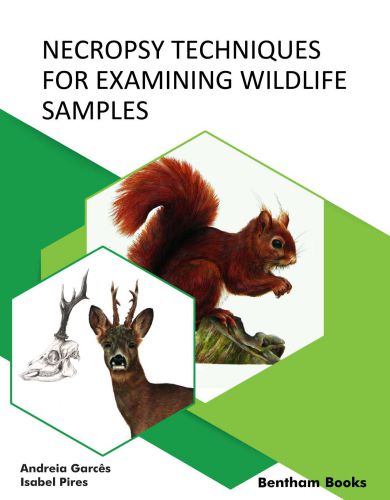Necropsy Techniques for Examining Wildlife Samples
by

In this handbook, the authors provide a practical, easily accessible guide of necropsy techniques for examining wildlife. Chapters introduce the reader to the value of necropsy in studying wildlife in general, sample collection methods, cadaveric phenomena and necropsy techniques for a variety of organisms ranging from invertebrates to mammals. The book addresses some of the peculiar characteristics of veterinary autopsy specific to different types of specimens.
The goal of this book is to equip the reader with the information necessary to conduct a forensic examination in order to reach a conclusive diagnosis of an animal’s death, while also understanding it in an ecological context. Necropsy Techniques for Examining Wildlife Samples is intended as an essential handbook for students and professionals of biology, zoology and veterinary medicine as well as professionals, who work in natural parks, wildlife rehabilitation centers and biological or zoological parks as conservationists, researchers or animal handlers.
Post-mortem examination is an essential tool for determining the cause and circumstances of death. Even in the era of molecular pathology, necropsy remains the most valuable tool for understanding the whole organism and the disease. Wildlife Necropsy and Forensics 1st Edition
In wildlife, the knowledge obtained from necropsy is much more comprehensive not only in pathology but also in several areas of biology (e.g. virology, microbiology, genetic). The correct interpretation of the phenomena surrounding the death can contribute to the identification of new diseases, re-emerging diseases, to the preservation of wildlife by identifying risk factors and threats to species survival. This should always be applied in a global health context.
One of the critical points of wildlife necropsy is the knowledge of anatomy, physiology and pathology of the different classes, and ultimately of a particular species. A necropsy of a different species is always challenging. Therefore, we try to apply and teach students of veterinary medicine and biology, some basic assumptions for maximizing wildlife necropsy success:
● Death is not the end, but a new path to generate knowledge that is essential for the preservation of life itself. The collection of samples for further exams is fundamental.
● It is necessary to look for the unity in the diversity of species, lesions and diseases.
● It is required to find the diversity of lesions in the unity of one etiological agent.
● Different lesions could represent different expressions of the same disease in different species.
● Similar macroscopic features could represent lesions or non-lesions according to the animal species.
● The death of each animal has its language. The challenge of every post-mortem exam is the comprehension of the message that each cadaver can transmit to us.
● The necropsy of wildlife takes us far beyond an individual diagnosis. The correct interpretation of lesions can be applied in the study of populations and ecosystem health.
Direct Link For Paid Membership: –
This Book is Available For Premium Members Only (Register Here)
Unlock 3000+ Veterinary eBooks or Go To Free Download
